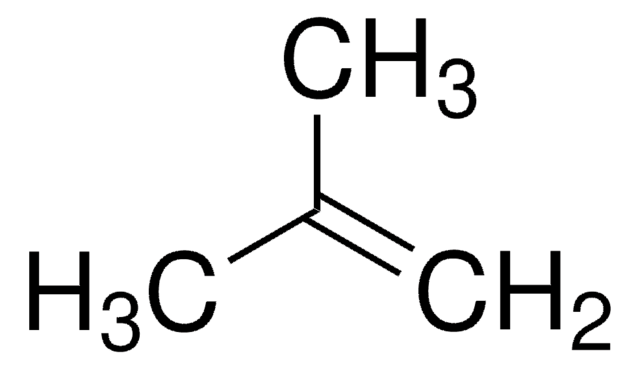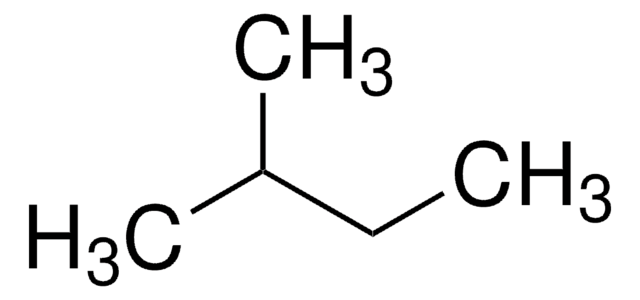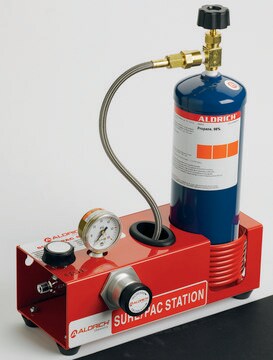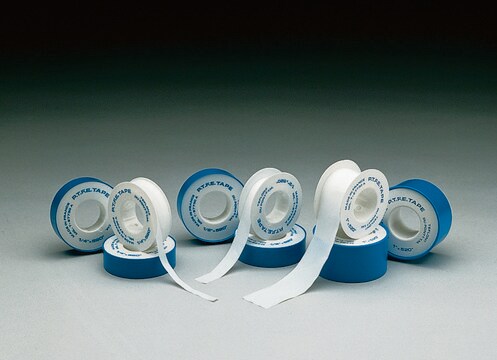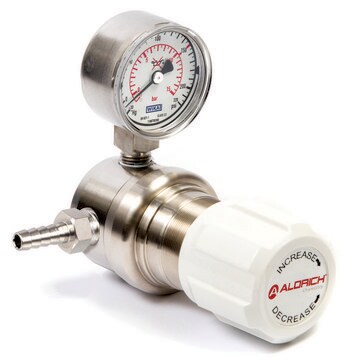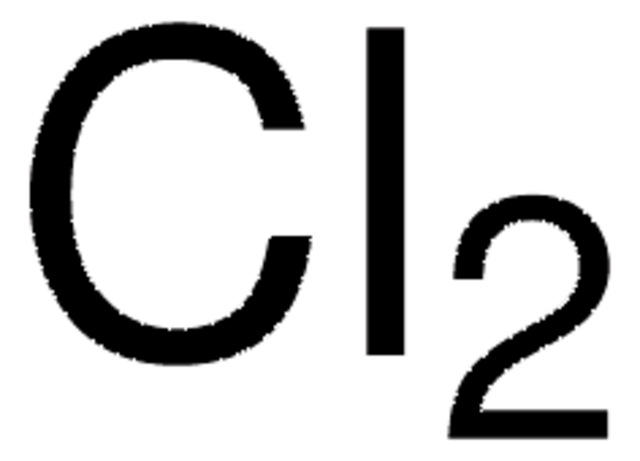About This Item
Recommended Products
vapor density
2.01 (21 °C, vs air)
Quality Level
vapor pressure
72.2 psi ( 37.7 °C)
Assay
99%
autoignition temp.
860 °F
expl. lim.
8.3 %
bp
−12 °C (lit.)
mp
−160 °C (lit.)
density
2.064 g/mL at 25 °C (lit.)
SMILES string
CC(C)C
InChI
1S/C4H10/c1-4(2)3/h4H,1-3H3
InChI key
NNPPMTNAJDCUHE-UHFFFAOYSA-N
Looking for similar products? Visit Product Comparison Guide
Related Categories
Application
- Isobutylene by catalytic dehydrogenation using various catalysts.
- Isopropyl methyl ketone by formylation reaction with carbon monoxide in the presence of super acid catalyst.
- tert-Butylhydroperoxide (TBHP) by oxidation.
Packaging
Compatible with the following:
Legal Information
also commonly purchased with this product
hose barb
recommended
regulator
Signal Word
Danger
Hazard Statements
Precautionary Statements
Hazard Classifications
Flam. Gas 1A - Press. Gas Liquefied gas
Storage Class Code
2A - Gases
WGK
nwg
Flash Point(F)
-117.4 °F - closed cup
Flash Point(C)
-83 °C - closed cup
Personal Protective Equipment
Choose from one of the most recent versions:
Already Own This Product?
Find documentation for the products that you have recently purchased in the Document Library.
Customers Also Viewed
Protocols
Protocol for GC Analysis of C1-C5 Hydrocarbons on Alumina Sulfate PLOT
GC Analysis of Hydrocarbons in Gasoline on Petrocol® DH, Isothermal
Our team of scientists has experience in all areas of research including Life Science, Material Science, Chemical Synthesis, Chromatography, Analytical and many others.
Contact Technical Service
